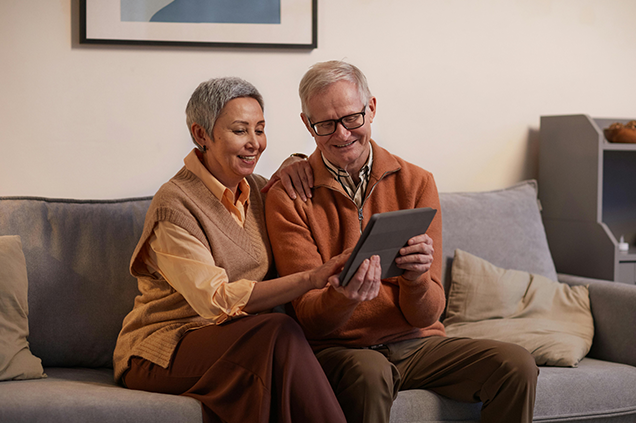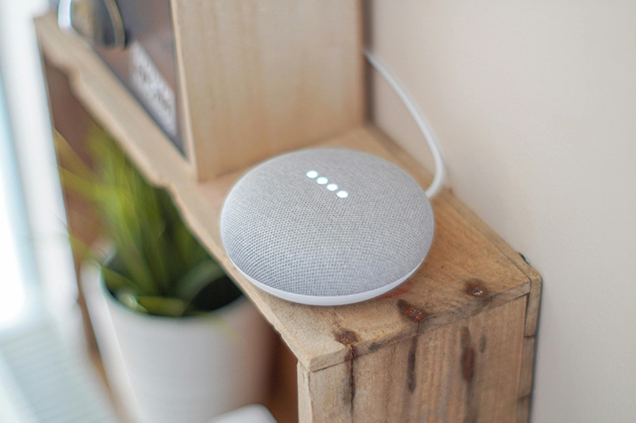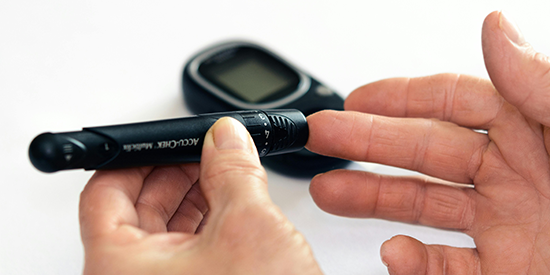Older Aussies use an AI assistant to better manage their diabetes
Research news
Summary
- Digital assistants like Apple’s Siri or Amazon’s Alexa are common in many Australian homes.
- Deakin University researchers are testing how AI assistants can help older Australians in managing type two diabetes, with promising results.
- Managing diabetes continues to be challenging, with less than 35% of people with chronic conditions sticking with supervised exercise programs for a year.
What do you use your virtual assistant for?
A recent survey found more than 40% of Australian households have a Google Home.
Whether it’s answering your burning questions, sending texts or giving directions, virtual assistants like Google Home or Alexa make it easier to do everyday tasks. Now, they might also help manage type two diabetes.
The traditional method of diabetes management requires a person to take prescribed medication, exercise often, eat well and regularly check their blood glucose levels or ‘blood sugar’. This routine can be time-consuming and hard to stick to regularly.
PhD candidate Costas Glavas and his supervisor Dr Paul Jansons, from Deakin’s Institute for Physical Activity and Nutrition (IPAN), are testing an exciting new software delivered via virtual assistant that can help ease this burden for people living with insulin-resistant type two diabetes. It’s called Buddy Link.

People with diabetes traditionally must remember to exercise to manage their condition. This could soon be a thing of the past. Marcus Aurelis/Pexels.
How does it work?
Buddy Link software is embedded into a digital assistant to broadcast a weekly exercise program and healthy eating advice to a person living with diabetes. The technology prescribes exercise sessions based on the user’s blood sugar.
The goal? Personalised and remote diabetes support that helps ‘patients better manage their diabetes’ and, in some cases, ‘reduce diabetes-related medical costs’, Costas’ study published in the JMIR Aging journal explains.
For example, the device will not recommend exercise if people have signs or symptoms of hypoglycaemia or extremely low blood sugar, report a blood sugar level less than 5.0 mmols/L (millimoles of glucose per litre of blood) or are not feeling well enough to exercise.
Instead, the digital assistant will ‘prescribe’ audio and video instructions on how to self-administer a personalised hypoglycaemia action plan.

New software can share real-time diabetes management advice using self-reported blood sugar levels. Device pictured not represented on model used in the study. John Tekeridis/Pexels.
What are the benefits?
Using a virtual assistant gives people living with diabetes a chance to manage their condition without the mental load.
‘Patients only need to self-report their blood glucose levels and the device will accurately determine if they’re fit to exercise.
‘This takes the pressure off the patient, helps them effectively self-manage and stops them from pushing themselves to take on physical activity when they’re not well enough,’ PhD candidate Costas says.
One of the most beneficial things is that it is simple and easy to use, particularly for older people who may have lower levels of digital literacy.
This approach makes diabetes management accessible
The study found that those using the digital assistant were more active and spent less time sitting.
The software might even make it easier for people with diabetes to follow their treatment plan by giving them guidance while at home and checking on their progress.
‘In the future, healthcare providers could also take advantage of this research and use a digital assistant to deliver and monitor prescribed diabetes management interventions,’ Dr Paul Jansons says.
This could be a significant step forward in making diabetes management more accessible and engaging.
About Costas Glavas
Costas Glavas is a PhD candidate at Deakin’s IPAN. His PhD thesis is titled ‘Digital health interventions for improving musculoskeletal and metabolic health in older adults with obesity and type II diabetes’.
About Dr Paul Jansons
Dr Paul Jansons is an exercise physiologist and Research Fellow at Deakin’s IPAN. His clinical and research expertise focuses on exploring novel digital health strategies to deliver lifestyle programs to prevent and manage chronic diseases in older adults.
- Currently an Executive Dean Research Fellow in Deakin’s Faculty of Health.
- Holds an honorary appointment with the Bone and Muscle Research Group, within the
School of Clinical Sciences at Monash Health, Monash University.
- Fields of research include clinical sciences, public health, health services and systems, allied health and rehabilitation science, sports science and exercise.
The text of this article is licensed under the Creative Commons Attribution (CC BY) 4.0 International license. We'd love for you to share it, so feel free! Please note that images, videos, graphics and logos are not covered by the CC BY license and may not be used without permission from Deakin University or their respective copyright holder. If you have any questions, please contact researchcomms@deakin.edu.au.
Thanks for reading! You can find more stories like this at deakin.edu.au/research/research-news-and-publications. We ask that Deakin University and individuals are appropriately credited and that you include links back to this website. Quotes in this article can be extracted for other articles provided individuals are appropriately credited and you include a link back to the article URL.
Share this story

Key Fact
Deakin researchers are delivering new software via Amazon’s Alexa to help improve physical activity among people with diabetes.
